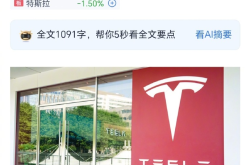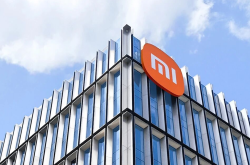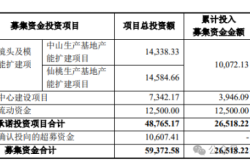Baidu's AI-to-Consumer Strategy: The Need for a New Catalyst
![]() 11/20 2025
11/20 2025
![]() 383
383
By Wu Xianzhi & Hao Xin
Edited by Wang Pan
On November 18, Baidu released its financial results for the third quarter of this year, revealing a striking divergence between its two core business segments.
Baidu Intelligent Cloud, represented by ACG (AI Cloud Group), maintained robust revenue growth. During the earnings call, Baidu disclosed that its AI cloud business generated RMB 6.2 billion in revenue for the quarter, marking a 21% year-on-year increase.
While many competitors are experimenting with consumer-facing (C-end) applications, Baidu Intelligent Cloud has primarily focused on the business-to-business (B-end) market in recent years, expanding its customer base across finance, energy, large enterprises, and government sectors.
In stark contrast, online marketing revenue, represented by MEG (Mobile Ecosystem Group), contracted to RMB 15.3 billion this quarter, a 18% decline year-on-year. During the same period last year, the earnings call indicated that revenue fluctuations would persist over the next one to two years due to the ongoing AI transformation.
More importantly, the financial report and third-quarter personnel changes raise two fundamental questions: What constitutes an AI business, and what defines an AI-era manager?
MEG: Leadership Transition, Not Strategic Shift
People are at the heart of organizational change, and executive appointments serve as visible indicators of strategic feedback. Two significant personnel moves occurred within Baidu's MEG division during the third quarter.
Wang Ying, head of Baidu Library and Baidu Netdisk, and Ping Xiaoli, head of Digital Humans, were elevated to group vice presidents, providing positive reinforcement to the organization and signaling "what should be done." Conversely, the departure of Yu Ke, former head of Baidu Short Drama, offered negative feedback, indicating "what should not be done."
Wang Ying's promotion was well-earned.
Baidu Library stands as the most successful and thoroughly AI-transformed product within Baidu's ecosystem, forming a synergistic relationship with Baidu Netdisk. Together, they have created a personal productivity efficiency model that has become Baidu's largest AI application for individuals—the core reason for Wang's promotion.
In August, following the iteration of Library GenFlow 3.0, a scheduled task function was introduced, automating data capture, information integration, content generation, and delivery to enhance personal productivity.
The earnings call serves as a critical barometer of internal trends. The topics and qualitative assessments mentioned by Robin Li provide significant feedback to the organization. Li referred to Baidu Library as a quintessential AI-native application, aligning with his core strategy of "focusing on applications" and affirming its current status. Currently, the combined quarterly gross profit of Baidu Library and Netdisk approaches RMB 300 million.
Unlike Wang Ying, who joined from outside, Ping Xiaoli is a homegrown executive. Li Yanhong's (Robin Li) casual remark during the earnings call actually shed light on the core reason for Ping's promotion.
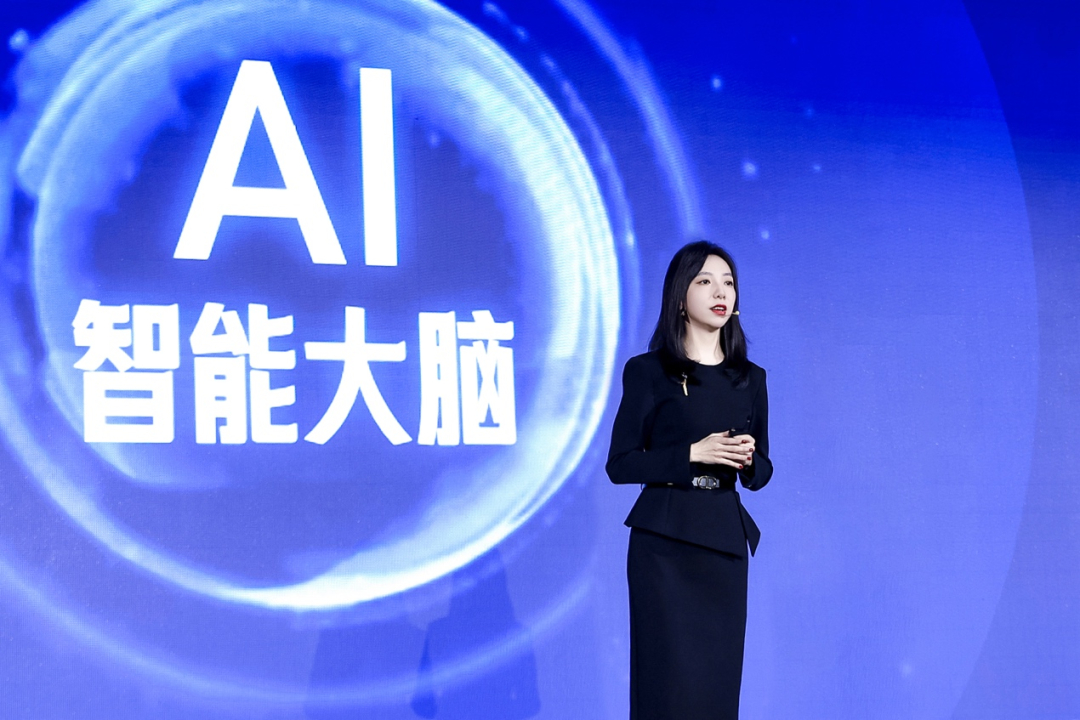
"In our mobile ecosystem, agents and digital humans represent AI-native monetization innovations that are transforming our online marketing business. They create significant value for advertisers through higher engagement, better lead conversion rates, and stronger ROI."
In this quarter's financial report, Baidu disclosed its AI business revenue for the first time and outlined four layers from infrastructure to applications. These layers reveal a talent flow system strongly correlated with AI narratives, as evidenced by quantifiable data.
The first layer comprises infrastructure revenue from Baidu Intelligent Cloud; the second layer includes AI application revenue, such as Baidu Library (GenFlow), Netdisk, and Baidu Famous Strategies (self-evolving super agents), totaling RMB 2.6 billion. Below that is native marketing service revenue, contributing RMB 2.8 billion, including AI marketing systems like Baidu Companion Flight and AI operational tools like Hui Boxing Star Digital Humans and merchant agents. Additionally, there is Luobo Kuaipao, which is directly deployed in physical scenarios and is in the early stages of commercialization.
"This quarter demonstrates how AI creates transformative value across our business, from enterprise services to consumer-facing products and intelligent mobility." Combining Li's statement during the earnings call, we can structurally understand Baidu's commercialization logic in the AI era.
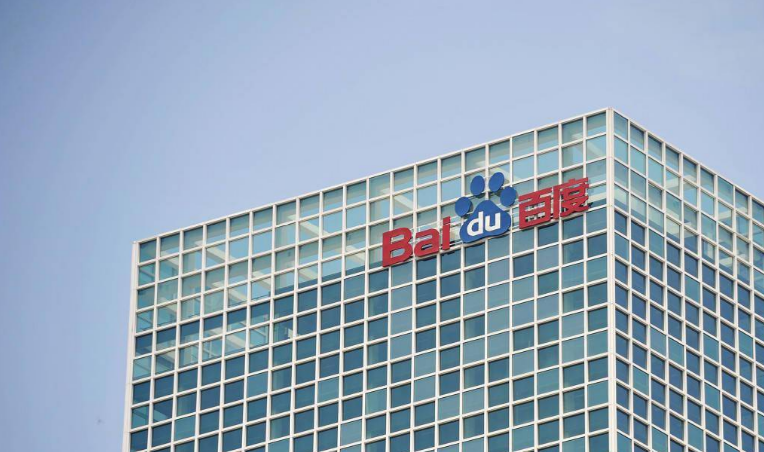
Beyond positive feedback, this quarter also saw negative feedback, namely the departure of Yu Ke, head of Baidu Short Drama.
A Baidu MEG source told Photon Planet that Yu's departure was unrelated to business performance, as evidenced by multiple factors. Baidu Short Drama surpassed RMB 40 million in the fourth quarter of last year, with sustained growth in monthly active users (MAU) this year driving user engagement on the Baidu APP and demonstrating strong commercial performance.
The robust performance of short dramas has maintained MEG's content ecosystem, with Baidu APP's monthly active users reaching 708 million as of September 30, up 1% year-on-year.
A Baidu MEG source mentioned two opportunities for Baidu's AI-to-consumer strategy: efficiency tools for young users, including Baidu Library, Baidu Netdisk, and digital humans; and AIGC-driven content consumption, primarily targeting middle-aged and elderly users.
In fact, Baidu has established a closed loop from content to consumption for middle-aged and elderly users.
Key content consumption areas for this demographic, such as emotions, politics, military affairs, livelihood, and new content forms like short dramas, are strong suits of Baidu MEG. In consumption scenarios, middle-aged and elderly users have higher tolerance for digital humans, which can solidify Baidu's e-commerce transaction volume in non-standard fields like jade, tea, and antiques.
"One reason for Yu Ke's departure might be 'overstepping' in upward management," said the MEG source. When business performance is strong, excessive focus on upward reporting can be counterproductive.
To B: A Stable Backend
The question of whether to pursue AI-to-business (AI-to-B) has always been a matter of survival.
Compared to AI applications, large-scale model B-end businesses offer fixed customer bases, stable revenue, replicable cloud models, and policy support, making them highly predictable. From a market perspective, large models and AI are increasingly seen as essential infrastructure, with companies holding higher market shares and revenue more likely to succeed in infrastructure competition, while others face elimination.
Transitioning from the cloud computing era to the AI era, while past advantages remain important, Baidu has an opportunity to start anew.
Data shows that in the first half of 2025, China saw 1,810 large model-related bids, with contracts exceeding RMB 6.4 billion, surpassing the total for 2024. Baidu Intelligent Cloud ranked first with 48 bids and RMB 510 million in contracts, leading in finance, energy, government, manufacturing, and other key industries.
Performance in the B2B market translates to revenue growth. In the third quarter of 2025, AI cloud infrastructure revenue reached RMB 4.2 billion, up 33% year-on-year, with AI accelerator infrastructure subscription revenue surging 128%.
Photon Planet observed that Baidu has developed a comprehensive logical framework for its B2B business: Each new business or product must consider applicable business scenarios, value creation, and integration with existing businesses from inception.
The recently acclaimed Famous Strategies project exemplifies this. Famous Strategies is an innovative project with a small, young team exploring cutting-edge technologies. Its project initiation was based on two premises: the popularity of agent technology and the global success of DeepSeek, which spurred demand for DeepSeek all-in-one machines.
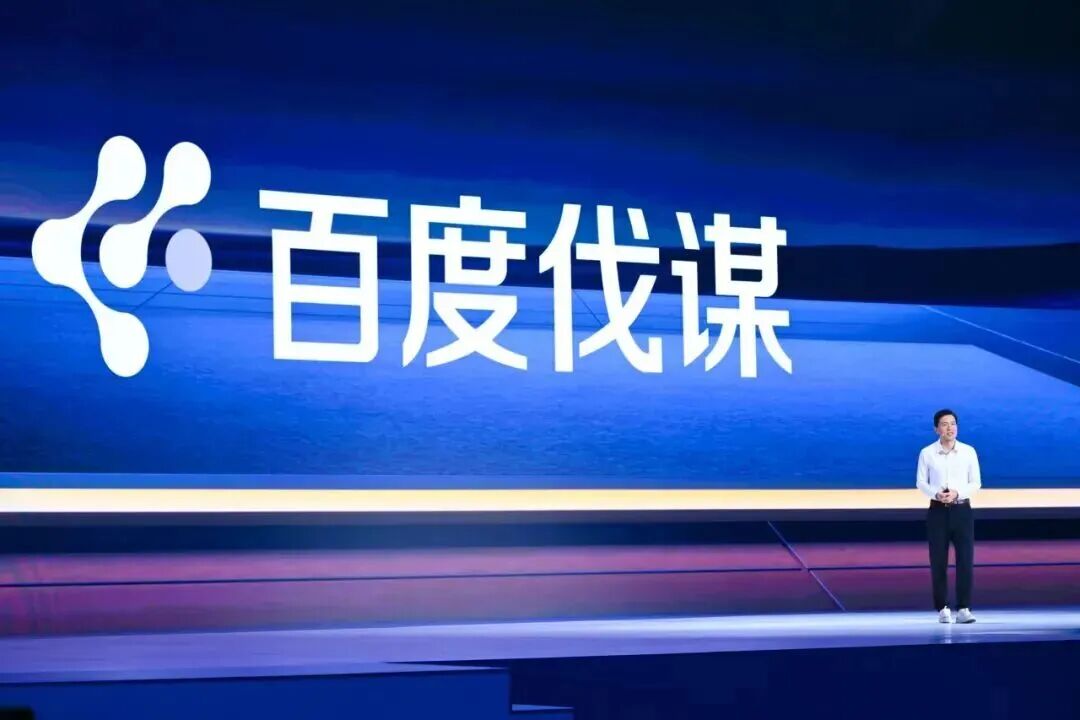
The Famous Strategies team believed that general-purpose agents capable of dialogue and simple tasks could not be effectively deployed in industrial scenarios. Instead of pursuing a broad approach, the team focused on breaking through "self-evolution" capabilities to create "super agents" specialized in solving complex algorithmic problems in production and R&D.
Famous Strategies upgraded AI from a tool to a "self-learning, self-iterating algorithm sharpener," targeting traffic control, financial risk management, energy logistics, and other areas with clear optimization goals and significant value potential. In practice, Famous Strategies integrates deeply with existing products like Baidu Intelligent Cloud's SaaS traffic control platform, Wenxin Large Model, and Qianfan Platform, forming a complete "cloud + AI + agent" solution for external output.
Value is directly reflected in key metric improvements. In a smart risk control project with CITIC Baixin Bank, Famous Strategies leveraged its ability to handle complex mathematical problems and continuous self-evolution, achieving professional data mining engineer-level performance in a short time, improving feature mining efficiency by 100% and risk differentiation by 2.41%.
From this, it is clear that Baidu's strong B2B logical framework is essentially a closed-loop path of "technology-scenario-value." Most of Baidu's current innovations must be grounded in real industrial pain points, synergize with existing ecosystems, and ultimately translate into tangible, quantifiable business value for customers.
The implementation path generally follows: developing a mature product, collaborating with B2B enterprises for co-creation, refining it in real industrial environments to form industry solutions, and internalizing it into a standardized output capability.
Special mention must be made of Baidu's B2B technology compatibility. Internally, multiple large model applications like Keyue, Xiling, Yijian, and Zhenzhi have completed adaptation and deployment of the DeepSeek model. Externally, Baidu has achieved compatibility with cloud environments, model technologies, and systems.
According to Photon Planet, even internal innovation projects like Famous Strategies explore models beyond Wenxin during the technology exploration phase, with the sole criterion of "achieving the best results."
In the trend of following large models, a company may deploy models and tools from multiple vendors simultaneously, but these resources often become isolated inventories lacking a unified "scheduling hub," making it difficult to generate synergistic business value. Baidu's compatibility ecosystem precisely addresses this pain point, integrating existing and even idle heterogeneous models and systems into a unified framework without requiring additional budgets from enterprise clients.
For enterprise clients, this means creating value from existing investments without new spending. This "spend once, achieve multiple goals" benefit provides another reason for clients to choose Baidu.
MEG: The Key to Late-Game "Tower Push"
Moving from B2B to B2C, Baidu also has an intermediary ground—digital humans.
Baidu's digital humans combine two attributes: in search, they act as "living maps" for instant Q&A, directly reaching users. In marketing, Luo Yonghao's digital human sets an example, while Baidu Huiboxing's digital humans bridge B2C commercial links.
Baidu's financial report states that AI-native marketing services, including agents and digital humans, represent a second growth curve beyond traditional businesses. In the third quarter of 2025, AI-native marketing service revenue reached RMB 2.8 billion, up 262% year-on-year.
Strictly classified as B2C, some AI applications generated RMB 2.6 billion in revenue in the third quarter of 2025, up 6% year-on-year. Together, these segments accounted for about 17% of total quarterly revenue. Compared to the high-investment, low-return AI cloud business, the potential of future B2C businesses remains substantial.
Undeniably, ACG has driven Baidu's growth over the past two years, serving as a genuine growth engine. Meanwhile, fluctuations in advertising revenue have kept MEG's revenue stable.
Despite slower growth, MEG remains Baidu's "cash cow" and traffic foundation. Its stable profits and cash flow provide capital for the company to invest in future businesses like ACG and AI, which require long-term commitment. For a time, MEG sustained Baidu's present, while ACG secured its future.
A new critical juncture seems to be arriving. The day before Baidu's financial disclosure, Alibaba launched Qianwen, a super app with a C-end focus, marking the beginning of large-scale AI-to-consumer initiatives by tech giants. Previously, ByteDance's Doubao attempted to integrate AI applications with Douyin through "add links" in dialogues, testing a new e-commerce model.
The AI-to-consumer battle is increasingly becoming an ecosystem war among tech giants, resembling a dormant volcano waiting to erupt.
Baidu is at a critical transformational stage, having successfully shifted its growth momentum from traditional advertising to intelligent cloud services while holding a potent "ace" in AI-to-consumer.

Baidu currently boasts over 100 million-user applications like Baidu APP, Baidu Netdisk, and Baidu Maps, which serve as massive traffic entry points and user engagement tools. Xiaodu smart speakers and screens lead the domestic market, acting as "bridges" into household scenarios and providing hardware carriers for AI capabilities like voice interaction and smart home control.
This means Baidu does not need to build its user network from scratch but already possesses a vast, readily available user ecosystem.
A large monthly active user base signifies a stable user foundation and brand recognition, providing a natural, low-cost environment for launching new product features. In an era of stock competition, user time growth is linked to product stickiness. If users spend more time within Baidu's ecosystem, the potential for AI service monetization increases.
The application matrix, along with smart devices, constitutes the front-end blueprint of Baidu's AI-to-Consumer (AI to C) strategy. However, a grand blueprint can only be transformed into reality with a solid implementation system in place. For a colossal organization like Baidu, AI represents a long-term endeavor. While numerous companies engage in discussions about AI, its true value emerges when it is seamlessly integrated into mechanisms and systems.
As early as 2024, Li Yanhong incorporated the establishment of an efficient organization tailored to the AI era into his Objectives and Key Results (OKR). A year later, his "streamlined OKR" re-emphasized the importance of aligning organizational talent and resources with strategic goals. The promotions of Wang Ying and Ping Xiaoli eventually offered a glimpse of the complete strategic layout.
At present, for organizations, the transition from traditional roles to AI-centric positions (AI to C) is poised to become the second significant opportunity for large-scale organizational talent mobility, following the information feed wars that took place from 2017 to 2020. Just as seen at the recently concluded Baidu World 2025, an increasing number of emerging talents are stepping out from behind the scenes and into the spotlight.


